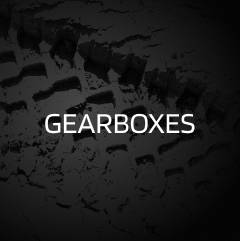 CCA Spares
CCA Spares
Land Rover Transfer Box Components – Gears and Shafts
The Land Rover transfer box is a critical component that enables the distribution of power between the front and rear axles. One of its key elements is the intricate system of gears and shafts. Let’s delve into the components and functionality of these gears and shafts within the transfer box.
Gears:
Overview: Gears in the transfer box are fundamental components responsible for controlling the distribution of power between the front and rear axles. These gears come in various sizes and configurations, allowing for different transfer ratios to adapt to diverse driving conditions.
Functions:
- Transfer Ratios: Gears enable the adjustment of transfer ratios, allowing the Land Rover to adapt to different terrains and driving scenarios.
- Power Distribution: Depending on the selected gear, power is distributed in varying proportions between the front and rear axles.
- Adaptability: The versatility of gear configurations allows the Land Rover to optimize performance for both on-road and off-road conditions.
Shafts:
Overview: Shafts within the transfer box play a crucial role in transmitting power from the input to the output, ensuring that the desired transfer ratio is achieved and power is effectively distributed to the axles.
Types of Shafts:
- Input Shaft: Receives power from the transmission and initiates the transfer process.
- Output Shafts: Transmit power to the front and rear axles, determining the final output to the wheels.
Functions:
- Power Transmission: Shafts facilitate the smooth transmission of power from the input shaft to the output shafts.
- Rotational Stability: Shafts maintain the stability of rotational motion, ensuring that power is transferred efficiently without unnecessary vibration or stress.
- Alignment: Proper alignment of shafts is crucial for the accurate distribution of power between the front and rear axles.
Differential:
Overview: The differential is another essential component in the transfer box. It allows for speed differentiation between the front and rear axles, ensuring smooth turning and optimal performance on varying surfaces.
Functions:
- Speed Differentiation: The differential enables the front and rear wheels to rotate at different speeds during turns.
- Traction Optimization: By allowing wheels to rotate independently, the differential optimizes traction, especially in challenging off-road conditions.
- Enhanced Maneuverability: Differential functionality enhances the Land Rover’s ability to navigate diverse terrains with improved stability and control.
In conclusion, the gears, shafts, and differential within the Land Rover transfer box work in harmony to achieve optimal power distribution between the front and rear axles. These components are pivotal for the Land Rover’s versatility, allowing it to tackle a wide range of driving conditions with precision and performance.
